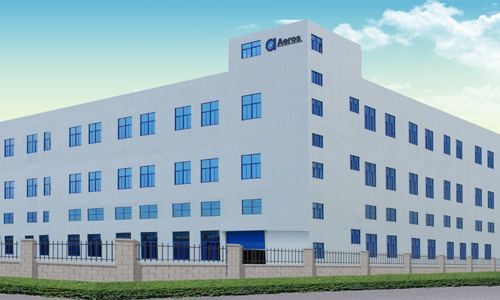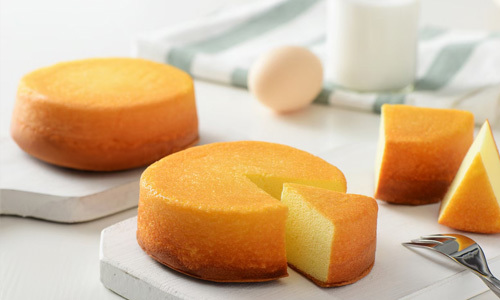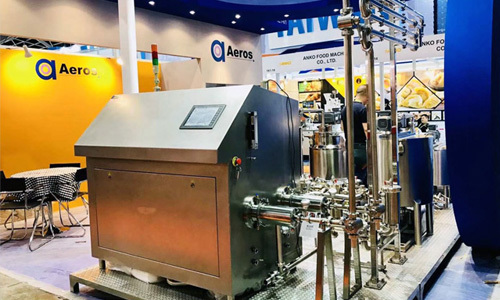Revolutionizing Cake Production: The Ultimate Aeration System Revealed

2024/09/23
Revolutionizing Cake Production: The Ultimate Aeration System Revealed
Table of Contents
- 1. Introduction to Cake Production and Aeration Systems
- 2. Importance of Aeration in Cake Production
- 3. The Science Behind Aeration in Baking
- 4. Types of Aeration Systems in the Food Manufacturing Industry
- 5. Advanced Technologies Transforming Cake Aeration
- 6. Benefits of Using Aeration Systems in Cake Production
- 7. Case Studies: Successful Implementation of Aeration Systems
- 8. The Future of Aeration Technology in Cake Manufacturing
- 9. Frequently Asked Questions
- 10. Conclusion
1. Introduction to Cake Production and Aeration Systems
In the world of food manufacturing, **cake production** stands as a testament to culinary artistry combined with technological innovation. **Aeration systems** play a pivotal role in enhancing the texture, volume, and overall quality of cakes. These systems ensure that air is properly incorporated into the batter, resulting in a light and fluffy end product. As the demand for high-quality baked goods increases, understanding and implementing advanced aeration systems becomes essential.
2. Importance of Aeration in Cake Production
Aeration is fundamental to cake baking as it significantly influences the texture and flavor of the final product. The incorporation of air into the batter not only increases the cake's volume but also contributes to a tender crumb. Without sufficient aeration, cakes can become dense and unappetizing. Consequently, manufacturers must prioritize aeration to meet consumer expectations and maintain competitiveness in the market.
The Role of Air in Cake Structure
When batter is mixed, air bubbles form and become trapped within the structure. During baking, these air pockets expand, causing the cake to rise. Proper aeration ensures a uniform distribution of air throughout the batter, which is crucial for achieving consistent quality.
Quality Control and Aeration
In large-scale production, maintaining consistent quality is paramount. Advanced aeration systems enable manufacturers to monitor and control the aeration process, leading to enhanced quality control. This results in cakes that are not only visually appealing but also boast superior taste and texture.
3. The Science Behind Aeration in Baking
Understanding the science behind aeration in baking is essential for optimizing production processes. The process begins with the mechanical action of mixing, which incorporates air into the batter. This mechanical aeration is complemented by chemical reactions that occur during baking.
Mechanical vs. Chemical Aeration
* **Mechanical Aeration:** This involves the physical action of mixing, where whisks or mixers create air pockets in the batter. The speed and duration of mixing can significantly impact the level of aeration achieved.
* **Chemical Aeration:** Chemical leavening agents, such as baking soda and baking powder, produce carbon dioxide when they react with moisture and heat. This additional gas further contributes to the cake's rise and texture.
Factors Affecting Aeration
Several factors influence the effectiveness of aeration, including:
- **Mixing Time and Speed:** Longer mixing times can lead to over-aeration, resulting in collapsed cakes. Conversely, insufficient mixing can lead to dense products.
- **Temperature:** Ingredients at room temperature mix more readily, enhancing aeration.
- **Ingredient Quality:** Fresh and high-quality ingredients contribute to better aeration and ultimately, superior cakes.
4. Types of Aeration Systems in the Food Manufacturing Industry
Various aeration systems are employed in cake production, each with its unique features and benefits. Understanding these systems can aid manufacturers in selecting the right technology for their needs.
Batch Aeration Systems
Batch systems mix a specific quantity of batter at a time, making them ideal for small to medium-scale production. These systems provide flexibility and control over the mixing process, allowing for adjustments based on specific recipes.
Continuous Aeration Systems
Continuous systems are designed for large-scale production and are capable of mixing vast quantities of batter without interruption. This efficiency reduces production time and increases output, making it suitable for high-demand environments.
Inline Aeration Systems
Inline systems integrate aeration directly into the production line, allowing for real-time monitoring and adjustments. These systems optimize the aeration process, ensuring consistent quality and reducing waste.
5. Advanced Technologies Transforming Cake Aeration
The food manufacturing industry is witnessing significant advancements in aeration technology. These innovations enhance efficiency, consistency, and quality in cake production.
Automated Mixing Systems
Automated mixing systems utilize sensors and software to monitor the mixing process. These systems can adjust mixing times and speeds based on real-time data, ensuring optimal aeration.
Vacuum Mixing Technology
Vacuum mixing technology removes air from the mixing chamber, allowing for the incorporation of even more air into the batter when it is reintroduced. This results in cakes with superior volume and texture.
High-Shear Mixing Systems
High-shear mixers create a powerful vortex that enhances the aeration process. This technology improves the incorporation of air and ensures a uniform batter consistency, leading to higher-quality cakes.
6. Benefits of Using Aeration Systems in Cake Production
Implementing advanced aeration systems in cake production offers numerous benefits that can enhance operational efficiency and product quality.
Enhanced Product Quality
Proper aeration leads to cakes with better texture, flavor, and appearance. Consumers are more likely to return for products that consistently meet their expectations.
Increased Production Efficiency
Advanced aeration systems streamline the mixing process, allowing for faster production times and reduced labor costs. This efficiency can significantly impact a company's bottom line.
Cost Savings
By optimizing the aeration process, manufacturers can minimize ingredient waste and reduce energy consumption, leading to substantial cost savings over time.
7. Case Studies: Successful Implementation of Aeration Systems
Examining real-world examples of successful aeration system implementation can provide valuable insights into best practices and outcomes.
Case Study 1: Global Bakery Inc.
Global Bakery Inc. implemented a continuous aeration system that increased their production capacity by 30%. By automating their mixing process, they achieved a consistent product quality and reduced labor costs.
Case Study 2: Sweet Treats Ltd.
Sweet Treats Ltd. adopted vacuum mixing technology and reported a significant improvement in cake volume and texture. Their customer satisfaction ratings increased, leading to higher sales and market share.
8. The Future of Aeration Technology in Cake Manufacturing
The future of aeration technology in cake production holds exciting possibilities. As manufacturers continue to embrace automation and data-driven solutions, we can expect advancements that further enhance product quality and production efficiency.
Integration of Artificial Intelligence (AI)
AI can analyze production data to optimize mixing parameters in real time, leading to better aeration and consistency. This technology will enable manufacturers to respond quickly to changes in production demands and ingredient quality.
Sustainability and Eco-Friendly Practices
As the industry shifts towards sustainability, future aeration systems will likely incorporate energy-efficient technologies and eco-friendly materials, reducing their environmental impact while maintaining product quality.
9. Frequently Asked Questions
1. What is aeration in cake production?
Aeration in cake production refers to the process of incorporating air into the batter, which enhances the cake's volume and texture.
2. Why is aeration important for cake quality?
Aeration is crucial for achieving a light and fluffy texture in cakes, ensuring a desirable end product for consumers.
3. What types of aeration systems are available?
There are various aeration systems, including batch, continuous, and inline systems, each catering to different production needs.
4. How do advanced aeration technologies improve cake production?
Advanced technologies like automated mixing systems and vacuum mixing enhance efficiency and product consistency, resulting in higher-quality cakes.
5. Can aeration systems help reduce production costs?
Yes, by optimizing the mixing process and minimizing waste, aeration systems can lead to significant cost savings in cake production.
10. Conclusion
The evolution of aeration systems has revolutionized cake production, enabling manufacturers to produce high-quality products efficiently and consistently. By understanding the science behind aeration and investing in advanced technologies, businesses can enhance their product offerings and stay competitive in the ever-evolving food manufacturing landscape. Embracing these innovations will not only improve operational efficiency but also elevate the consumer experience, ensuring that every bite of cake is a delight.
Cake continuous aeration system







